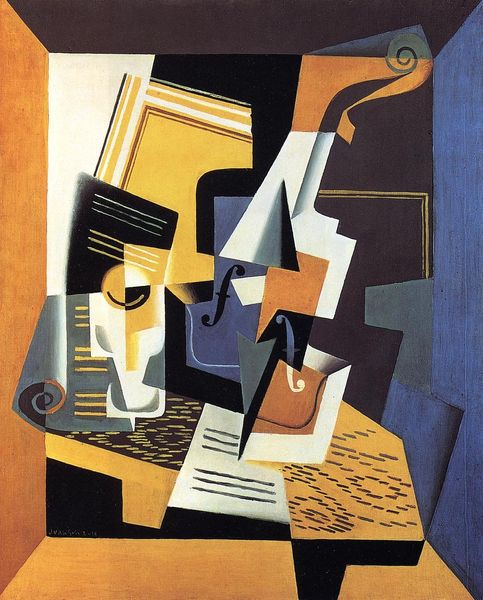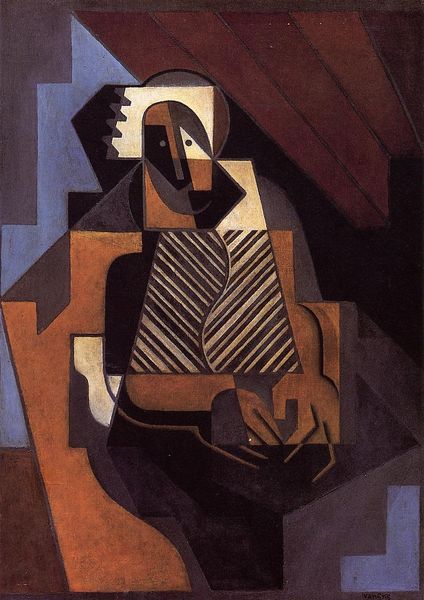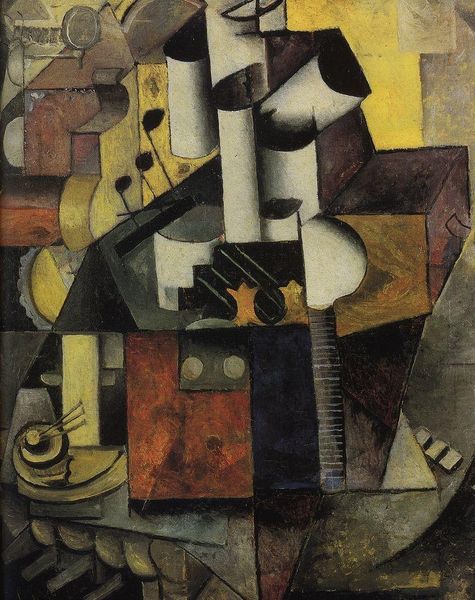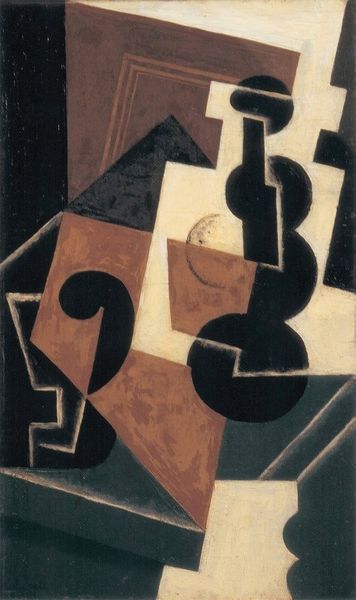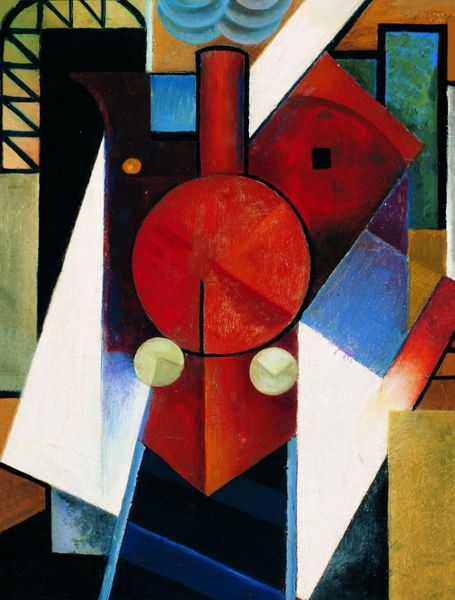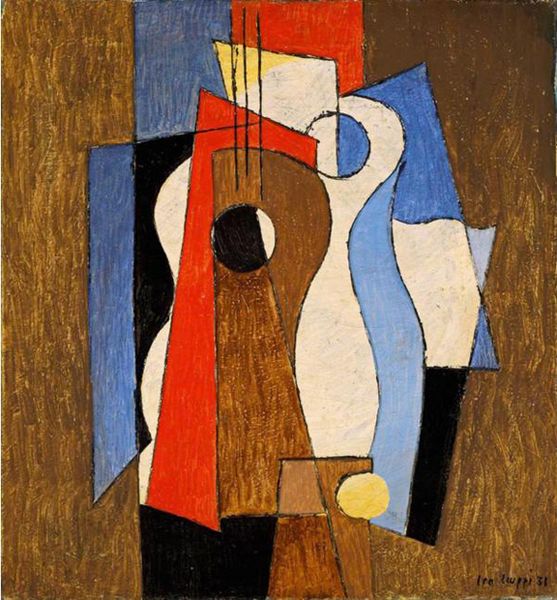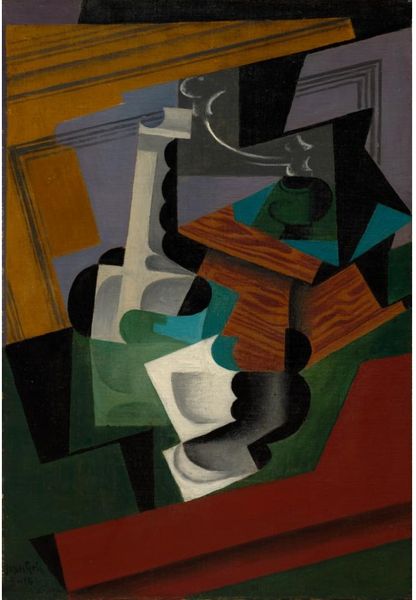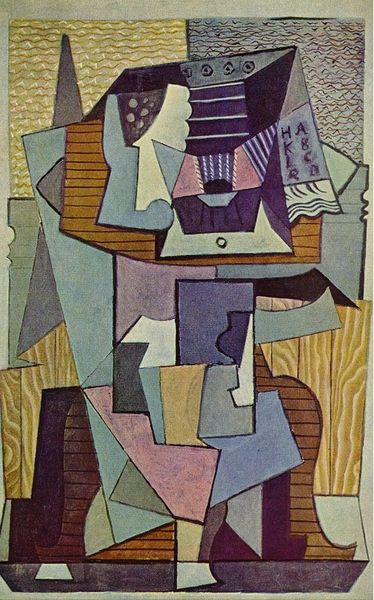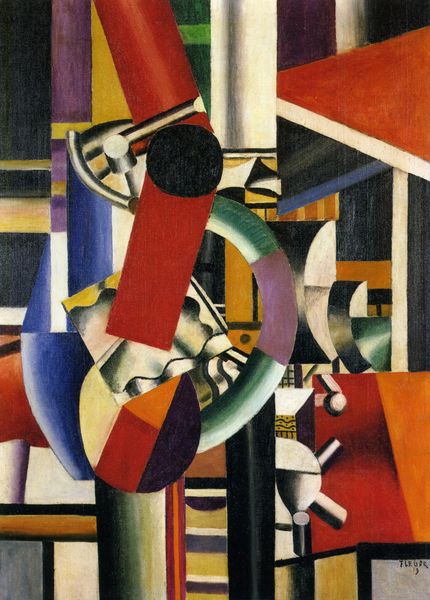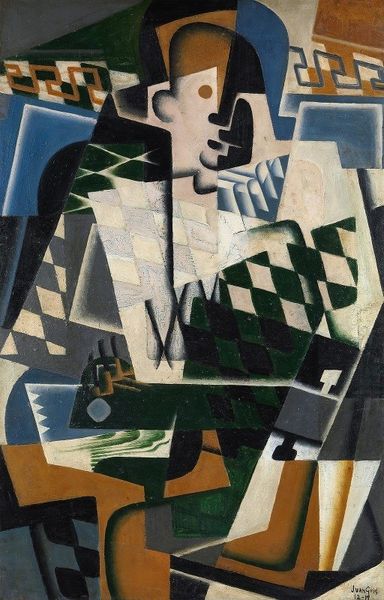
oil-paint
#
cubism
#
oil-paint
#
oil painting
#
geometric-abstraction
Copyright: Public domain
Curator: Here we have Juan Gris's "Still Life on a Chair," created in 1917. Gris used oil on canvas for this exploration of Cubist principles, currently residing at the Georges Pompidou Center in Paris. Editor: It has such a grounded, yet playful mood to it, don’t you think? The subdued colors contrasting with the very angular construction create a push and pull in my mind. Curator: Absolutely. I see a deliberate orchestration of symbolic elements here. A pitcher rendered as geometric forms immediately catches the eye. Notice the chair itself and how it becomes almost architectonic, suggesting stability and domesticity. Editor: It's intriguing how Cubism fractures these everyday objects. Is Gris hinting at the fragmentation of society during the First World War, or perhaps questioning the conventional perspectives during times of change? Curator: That's an insightful reading. The symbolism extends further—objects on chairs carry historical and social meaning. They stand as potent signifiers of leisure, the domestic sphere, or perhaps an artist's studio. Think of the symbolism surrounding the color. It all adds layers. Editor: It raises questions of accessibility, though. By breaking objects into geometric forms, who gets to unlock their secrets? Was Gris attempting to dismantle hierarchies in art or unintentionally creating them? And speaking of hierarchies, what about the positioning? Did you see a symbol? Curator: An interesting provocation! Gris, like other Cubists, used fracturing and recomposition as an intellectual and even playful disruption of representation, questioning how we perceive reality itself. So you’re right in that dismantling hierarchies was definitely present. Editor: A disruption with lasting implications, definitely. It challenges us to decode reality. Curator: A symbolic landscape built from domestic fragments—what stays with you after contemplating this work? Editor: Definitely how it echoes the need for constant vigilance—always dissecting accepted structures and norms and questioning who holds the hammer. What about you? Curator: The interplay between what appears static—still life, objects in space—and dynamic forces in art history has a unique quality. I’m drawn back to the timeless mystery of how mundane things gain immortality through symbols.
Comments
No comments
Be the first to comment and join the conversation on the ultimate creative platform.

